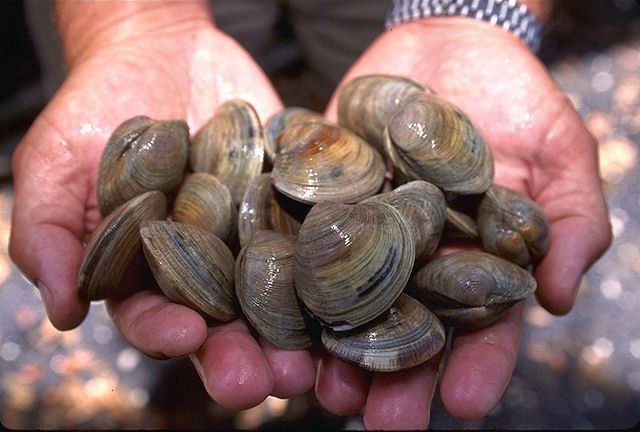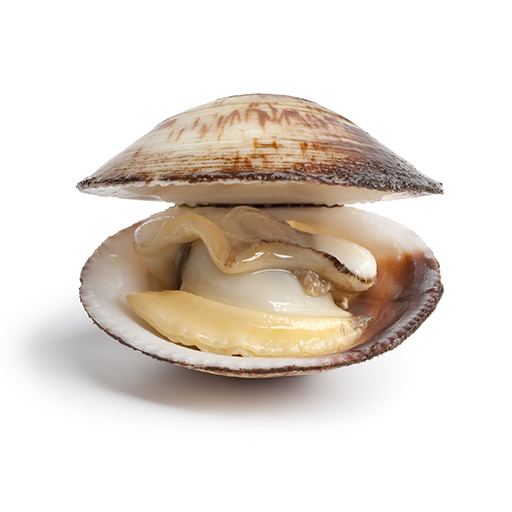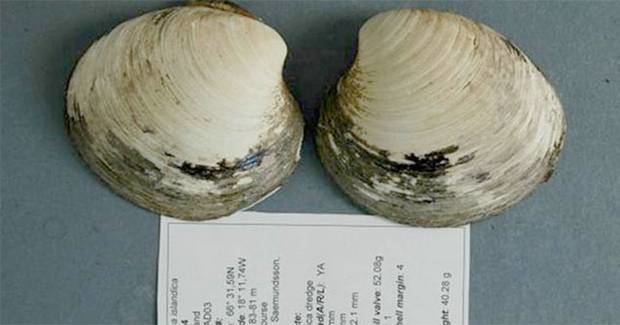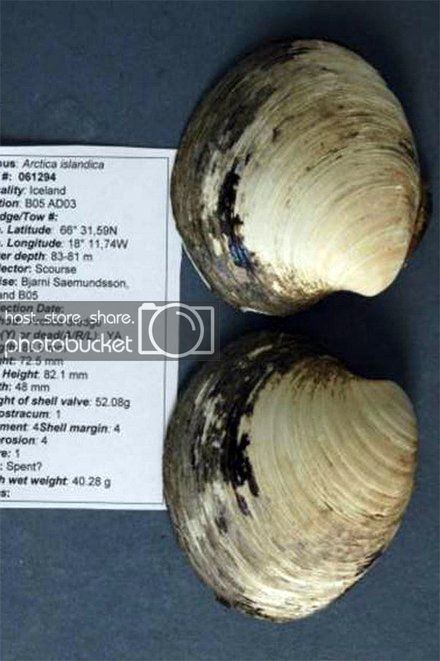
"Clam" is a marine living organism which lives inside shell
Remains first appeared in Cambrian age rocks 510 million years ago.
They presently live in both freshwater and marine habitats, and range in adult size from nearly microscopic to the giant clam, which can weigh 200 kg (440 lb).

Some have life cycles of only one year, while at least one has been discovered that may be over 500 years old.
They lack heads but most can react to changes in light.

Ming (c. 1499 – 2006) was a nickname given to a specimen of the ocean quahog clam (Arctica islandica, family Veneridae), that was dredged off the coast of Iceland in 2006 and whose age was calculated by counting annual growth lines in the shell.
Ming was the oldest individual (non-colonial) animal ever discovered whose age could be accurately determined.

Originally thought to be 405 years old, Ming was later determined to be 507 years old
Ming was dredged off the northern coast of Iceland in 2006. In 2007, on the basis of counting the annual growth bands on the cross-sectional surface of the hinge region of the shell, researchers announced that the clam was 405 years old.
The research was carried out by researchers from Bangor University, including Dr. Alan Wanamaker, Dr. Paul Butler, Professor James Scourse and Professor Chris Richardson. It is not known how much longer Ming might have lived had it been left in place on the ocean floor.
It was named after the Ming dynasty, during which it was born.
Professor Richardson said that the existence of such long-lived species could help scientists discover how some animals reach such advanced ages.
References
